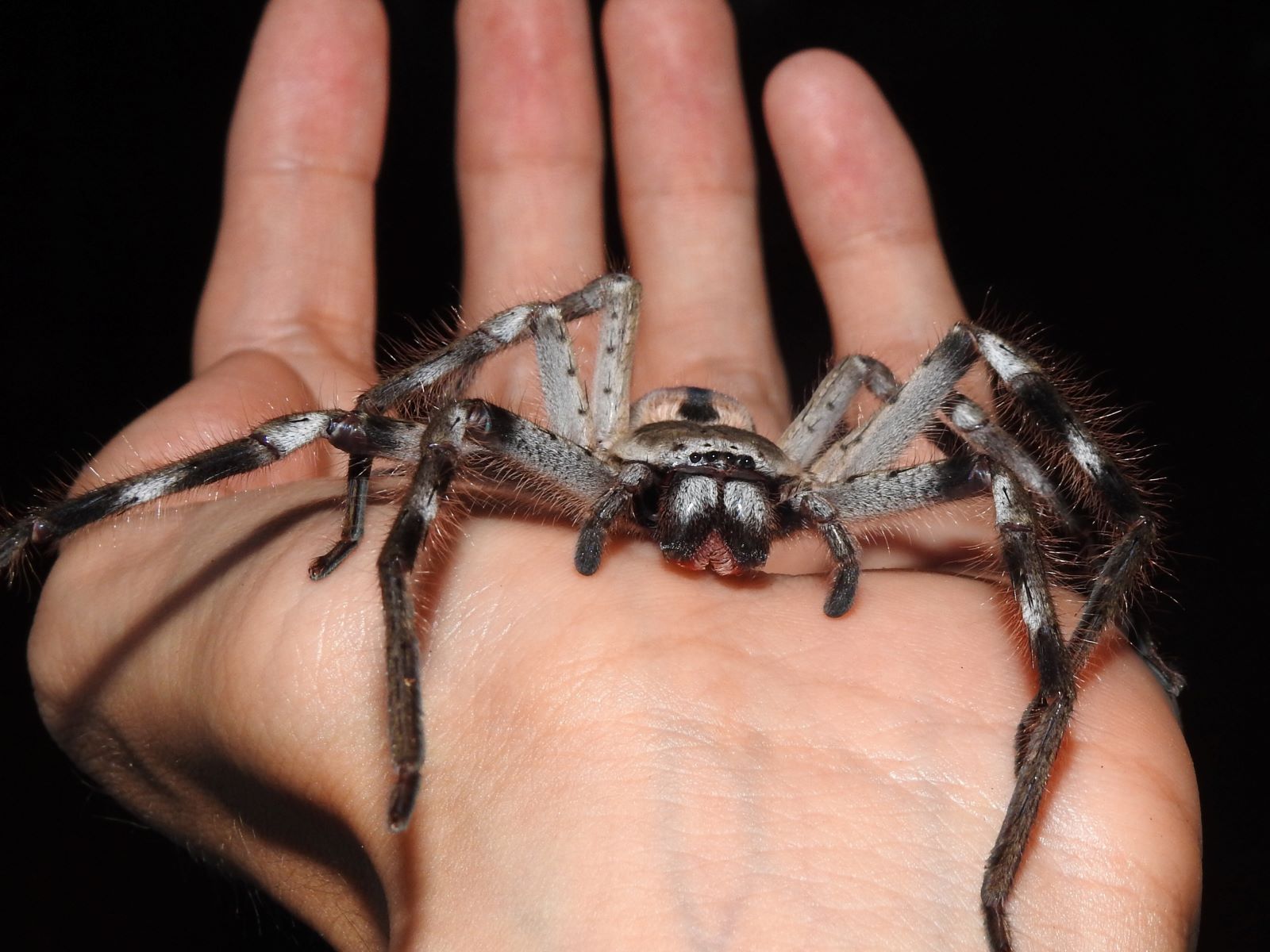
The banded huntsman spider is a fascinating creature that often sends shivers down people’s spines. With its large size and intimidating appearance, this spider has earned a reputation as one of the most formidable arachnids in the animal kingdom. However, there is much more to the banded huntsman than meets the eye. In this article, we will explore 14 unbelievable facts about the banded huntsman that will surely leave you amazed and with a newfound appreciation for these eight-legged creatures. From their unique hunting techniques to their remarkable adaptability, prepare to dive deep into the world of the banded huntsman spider and discover why it is such a remarkable species.
Key Takeaways:
- Banded Huntsman spiders are giant, agile hunters found in Australia. Despite their intimidating appearance, they are mostly harmless to humans and play a crucial role in controlling insect populations.
- These spiders don’t build webs but rely on their speed and precision to catch prey. They are beneficial to the environment and can live for several years, contributing to their ecosystems.
The Banded Huntsman is a Giant Spider
The Banded Huntsman, scientifically known as Holconia insignis, is a species of giant spiders found in Australia. These arachnids are known for their impressive size and incredible hunting abilities.
They Can Grow up to 5 Inches in Leg Span
One of the most remarkable characteristics of the Banded Huntsman is its size. With a leg span that can reach up to 5 inches, these spiders can appear intimidating to those who encounter them in the wild.
They Are Part of the Sparassidae Family
The Banded Huntsman belongs to the Sparassidae family, also known as huntsman spiders. This family contains a diverse range of spiders known for their speed, agility, and hunting prowess.
Banded Huntsman Spiders Have Striking Markings
As their name suggests, Banded Huntsman spiders have distinctive markings on their bodies. These markings can vary in color and pattern, but they usually consist of dark bands across a lighter background, helping them blend into their surroundings.
They Are Skilled Hunters
The Banded Huntsman is an ambush predator that patiently waits for its prey to come within striking distance. Once the moment arrives, it quickly pounces on its victim, using its powerful legs and fangs to immobilize and subdue its prey.
Banded Huntsman Spiders Are Mostly Harmless to Humans
Despite their intimidating appearance, Banded Huntsman spiders are generally harmless to humans. They prefer to avoid confrontation and will typically only bite if provoked or threatened.
They Are Found in Various Habitats
Banded Huntsman spiders can be found in a wide range of habitats, including forests, woodlands, gardens, and even inside homes. They are skilled climbers and can often be seen on tree trunks, walls, or ceilings.
Their Hunting Techniques Are Impressive
Banded Huntsman spiders use a combination of stealth, speed, and precision to catch their prey. They have excellent eyesight and rely on their ability to camouflage themselves before launching a surprise attack.
They Are Not Web-Building Spiders
Unlike many other spider species, Banded Huntsman spiders do not build intricate webs to capture their prey. Instead, they rely on their incredible speed and agility to chase and capture their unsuspecting victims.
They Can Produce Hundreds of Eggs
Banded Huntsman spiders are prolific breeders. Female spiders can lay hundreds of tiny eggs, which they carefully protect until they hatch. The young spiders then undergo several molting stages before reaching maturity.
They Are Beneficial to the Environment
Banded Huntsman spiders play an essential role in controlling the population of insects and other small invertebrates in their habitats. By preying on pests, they help maintain the balance of ecosystems.
Banded Huntsman Spiders Can Live for Several Years
The lifespan of Banded Huntsman spiders can vary, but generally, they can live for several years. This extended lifespan allows them to continue hunting and contributing to their ecosystems over an extended period.
They Are Agile and Fast-Moving
One of the remarkable attributes of the Banded Huntsman is its agility and speed. They are incredibly swift, allowing them to navigate challenging terrains and catch their prey with remarkable efficiency.
Banded Huntsman Spiders Are Found Only in Australia
The Banded Huntsman is native to Australia and is primarily found in the regions of Queensland, New South Wales, and Victoria. Its unique characteristics and striking appearance make it a fascinating species to study and observe.
These 14 unbelievable facts about the Banded Huntsman highlight the incredible nature of this species. From its impressive size and agility to its unique hunting techniques, these spiders continue to captivate researchers and enthusiasts alike. While they may evoke a sense of fear or fascination, it’s important to appreciate the vital role they play in maintaining the delicate balance of Australia’s ecosystem.
Conclusion
The Banded Huntsman is truly a remarkable creature with its unique characteristics and astonishing abilities. From its impressive size and vibrant coloration to its incredible hunting techniques and fascinating behavior, this spider has captivated the attention of many animal enthusiasts.
By understanding the banded huntsman’s natural habitat, preferred prey, and mating habits, we can gain a deeper appreciation for this remarkable arachnid. Its ability to adapt to various environments and its role in maintaining the balance of ecosystems highlight the importance of preserving its habitats.
So, the next time you spot a banded huntsman, remember the fascinating facts you’ve learned about this incredible creature. Take a moment to observe its beauty and marvel at its exceptional hunting prowess.
FAQs
1. Are banded huntsman spiders dangerous?
Banded huntsman spiders are generally not considered dangerous to humans. While they have venom and can deliver a bite, their venom is not typically harmful to humans and rarely causes severe reactions.
2. How big do banded huntsman spiders get?
Banded huntsman spiders can reach a leg span of up to 15 centimeters (6 inches), making them one of the largest spider species in the world. However, their body size is usually smaller, averaging around 2.5-3.8 centimeters (1-1.5 inches) in length.
3. Where can banded huntsman spiders be found?
Banded huntsman spiders are native to tropical and subtropical regions, particularly in parts of Asia, Australia, and Africa. They can be found in various habitats, including forests, gardens, and urban areas.
4. What do banded huntsman spiders eat?
Banded huntsman spiders primarily feed on insects and other small invertebrates. They are skilled hunters and rely on their speed and agility to catch their prey.
5. Do banded huntsman spiders build webs?
No, banded huntsman spiders do not build traditional webs. Instead, they use their keen vision and speed to chase down their prey. They are considered ambush predators, hiding and waiting for unsuspecting insects to come within their striking range.
Was this page helpful?
Our commitment to delivering trustworthy and engaging content is at the heart of what we do. Each fact on our site is contributed by real users like you, bringing a wealth of diverse insights and information. To ensure the highest standards of accuracy and reliability, our dedicated editors meticulously review each submission. This process guarantees that the facts we share are not only fascinating but also credible. Trust in our commitment to quality and authenticity as you explore and learn with us.


